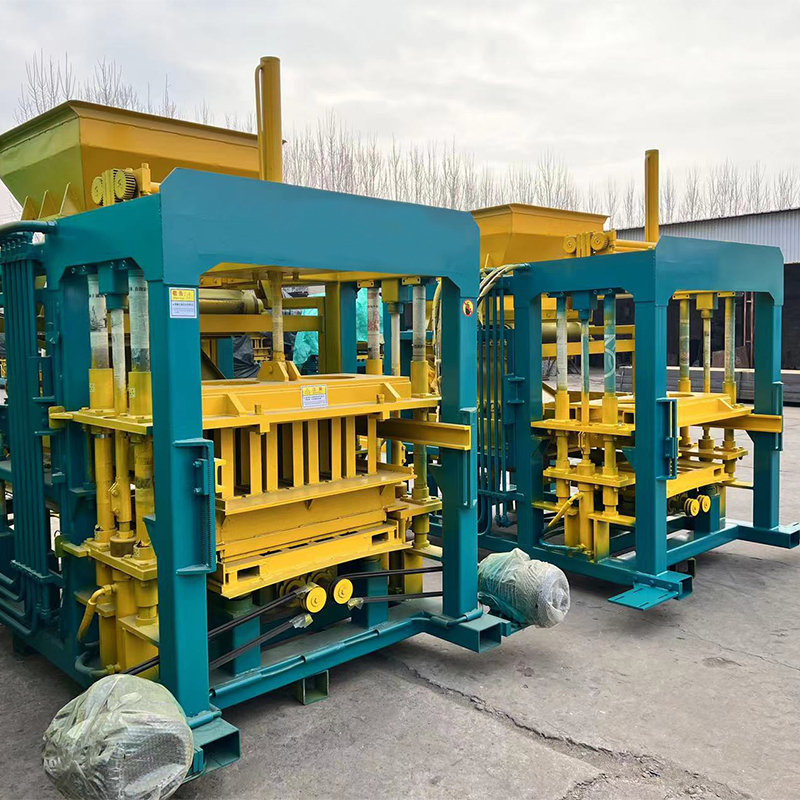
Image source :Aiweiblockmachine
The Role of Block Machinery in Modern Construction
The construction industry is in a state of constant evolution, driven by advancements in technology and the ever-increasing demand for more efficient, sustainable, and cost-effective building solutions. At the heart of this transformation lies the role of block machinery in modern construction. From producing concrete blocks and bricks to shaping the very foundation of our built environment, block machinery plays a pivotal role in shaping the way we build in the 21st century. This comprehensive article explores the multifaceted role of block machinery, its historical context, and its significance in the context of modern construction practices.
I. Introduction
In an age where construction is synonymous with progress, the role of block machinery cannot be overstated. Block machinery encompasses a wide array of equipment and technologies designed for the production of building blocks, bricks, and related construction materials. These materials are the building blocks of structures ranging from homes and commercial buildings to critical infrastructure.
II. Historical Perspective
To fully appreciate the role of block machinery in modern construction, it’s crucial to understand its historical evolution.
1. The Early Days of Construction Materials
Historically, construction materials were often sourced and processed manually, involving considerable labor and time. Materials such as adobe bricks, mud bricks, and stone blocks were shaped by hand, leading to inconsistent quality and labor-intensive processes.
2. The Industrial Revolution
The Industrial Revolution of the 18th and 19th centuries marked a turning point in construction technology. Manual processes began giving way to machinery, including early brick-making machines powered by steam engines and waterwheels.
3. Emergence of Block Machinery
The late 19th century saw the development of block machinery specifically designed for shaping bricks and concrete blocks. These machines utilized hydraulic pressure to create uniform, high-quality building materials.
III. The Modern Role of Block Machinery
1. Production of High-Quality Blocks
Block machinery in the modern era is engineered for precision and efficiency. It produces consistent, high-quality building blocks, ensuring structural integrity and durability in construction projects.
2. Varieties of Building Blocks
Modern block machinery facilitates the production of various types of building blocks, including standard concrete blocks, hollow core blocks, interlocking blocks, and specialty blocks with different shapes, sizes, and properties.
3. Sustainable Materials
In response to growing environmental concerns, block machinery has adapted to accommodate sustainable practices. This includes the use of recycled materials, fly ash, and slag in block production, reducing waste and the carbon footprint.
4. Automated Production
Automation has revolutionized block machinery. High-speed block-making machines, robotic handling systems, and computer-controlled processes have significantly increased production rates and reduced labor costs.
5. Enhanced Design Capabilities
Modern block machinery incorporates computer-aided design (CAD) and 3D printing technologies, allowing for the creation of intricate and custom block patterns. This opens up a world of possibilities for architects and builders.
6. Sustainable Energy Solutions
Block machinery is exploring sustainable energy sources, such as solar-powered machines and waste heat recovery systems, reducing energy consumption and environmental impact.
IV. The Sustainable Revolution
Sustainability has become a driving force in modern construction, and block machinery is playing a pivotal role in this paradigm shift.
1. Energy-Efficiency
Modern block machinery incorporates energy-efficient features, including variable frequency drives and optimized processes, reducing energy consumption during block production.
2. Waste Reduction
By enabling the use of recycled materials and producing less waste during production, block machinery contributes to reducing construction-related landfill waste.
3. Carbon Neutrality
Innovations like carbon capture technology are being explored to allow blocks to absorb carbon dioxide over time, contributing to carbon-neutral construction practices.
V. Digital Integration
Block machinery is increasingly becoming part of the digital revolution in construction.
1. Internet of Things (IoT)
IoT technology is being integrated into block machinery to monitor and optimize production processes. Sensors collect data on machine performance and maintenance needs in real-time.
2. Big Data and Analytics
Data analytics tools process the massive amount of data generated by block machinery, providing insights that help optimize production, reduce downtime, and enhance quality control.
3. Remote Monitoring
Operators and maintenance teams can remotely monitor block machinery, allowing for proactive maintenance and troubleshooting, which reduces downtime and improves efficiency.
VI. The Future of Block Machinery
As the construction industry continues to evolve, the role of block machinery is poised for further transformation.
1. Nanotechnology
Nanomaterials are being explored for creating stronger and more durable block materials, potentially extending the lifespan of structures.
2. 3D Printing
3D printing technology is revolutionizing block production, allowing for customized, on-site production of building blocks and intricate architectural elements.
VII. Conclusion
In conclusion, the role of block machinery in modern construction is nothing short of revolutionary. From producing high-quality, sustainable building blocks to embracing automation, digitalization, and cutting-edge materials, block machinery has become a driving force in shaping the construction industry of the future.
As we move forward, the collaboration between builders, engineers, and technologists will continue to drive innovation in block machinery. This innovation will ensure that construction remains at the forefront of modernization, building not just structures but a sustainable and technologically advanced future. Block machinery is, indeed, the cornerstone of modern construction, building a sustainable future, one block at a time.
